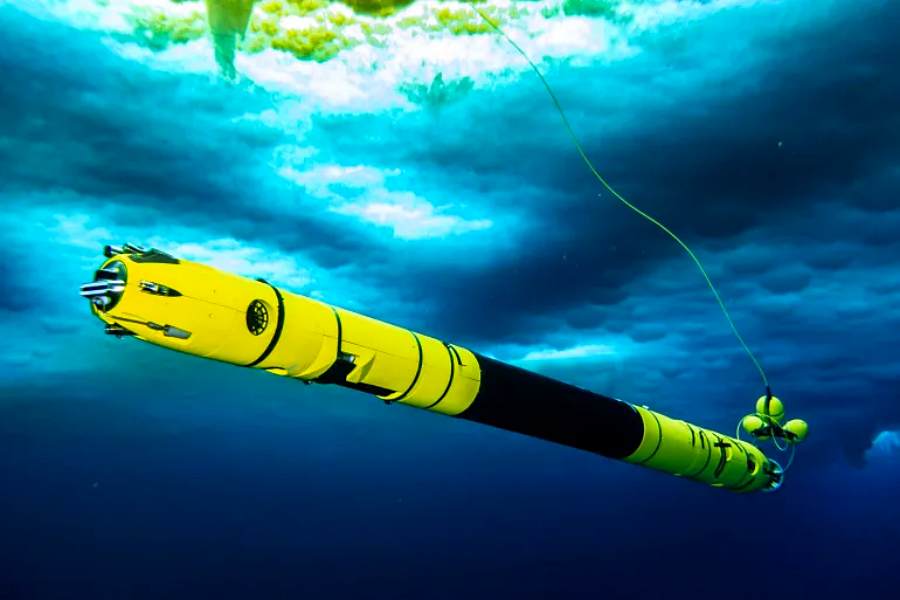![]() The pencil-shaped Icefin robot helped scientists see what’s happening below the grounding line, where the ice first juts over the seaImage: Becka Bower/Cornell University/Handout via REUTERS
The pencil-shaped Icefin robot helped scientists see what’s happening below the grounding line, where the ice first juts over the seaImage: Becka Bower/Cornell University/Handout via REUTERS
Thu 16 February 2023:
Warm water is reportedly pouring into the gigantic Thwaites Glacier in Antarctica, sometimes known as the “Doomsday Glacier,” endangering both its survival and a major rise in sea level.
Thwaites, which is about the size of Florida, has the ability to contribute more than half a meter (1.6 feet) to the rise in sea level globally. It also has the potential to destabilize nearby glaciers, which might result in an additional three meters (9.8 feet) of rise.
A team of 13 US and British scientists spent about six weeks on the glacier in late 2019 and early 2020. Using an underwater robot vehicle known as Icefin, mooring data and sensors, they monitored the glacier’s grounding line, where ice slides off the glacier and meets the ocean for the first time.
The work comes out of a massive $50 million (€47 million) multi-year international research effort to better understand the widest glacier in the world.
Using an underwater robot vehicle known as Icefin, mooring data and sensors, they monitored the glacier’s grounding line, where ice slides off the glacier and meets the ocean for the first time.
In one of two papers published on Wednesday in the journal Nature, led by Cornell University-based scientist Britney Schmidt, researchers found warmer water was making its way into crevasses and other openings known as terraces, causing sideways melt of 30 metres (98 feet) or more per year.
“Warm water is getting into the weakest parts of the glacier and making it worse,” said Schmidt. “That is the kind of thing we should all be very concerned about.”
The other paper’s findings, which Schmidt also worked on, showed about 5 metres (16 feet) per year of melt near the glacier’s grounding line – less than what the most aggressive thinning models previously predicted.
But she said the melting was still of grave concern.
“If we observe less melting … that doesn’t change the fact that it’s retreating,” Schmidt said.
The papers represent the first time a team has been to the grounding line of a major glacier, providing a look right where “the action begins”, Schmidt said.
After warm water enters the crevices, fracturing “potentially accelerates the overall demise of that ice shelf”, said Paul Cutler, the Thwaites programme director for the National Science Foundation, who returned from the ice last week. “Its eventual mode of failure may be through falling apart.”
SOURCE: INDEPENDENT PRESS AND NEWS AGENCIES
___________________________________________________________________________________________________________________________________
FOLLOW INDEPENDENT PRESS:
TWITTER (CLICK HERE)
https://twitter.com/IpIndependent
FACEBOOK (CLICK HERE)
https://web.facebook.com/ipindependent
Think your friends would be interested? Share this story!





